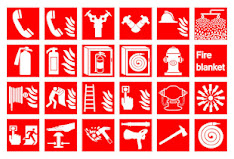Fire Suppression System
Fire Suppression System
## Introduction
A fire suppression system is a vital component in protecting lives and property from the devastating effects of fires. It is designed to detect, control, and extinguish fires in various settings, including homes, businesses, and industrial facilities. This article explores the importance and functionality of fire suppression systems, highlighting their features and benefits.
### Benefits of Fire Suppression Systems
- Enhances safety by minimizing the risk of fire-related injuries and fatalities
- Protects property and assets from damage caused by fires
- Reduces downtime and business interruption due to fire incidents
- Provides early detection and quick response to extinguish fires
- Offers peace of mind knowing that a reliable fire suppression system is in place.
## Types of Fire Suppression Systems
There are several types of fire suppression systems available, each specifically designed to cater to different fire hazards. These include:
### 1. Wet Pipe Sprinkler System
- Most common and widely used fire suppression system
- Employs automatic sprinkler heads connected to a network of pipes filled with water under pressure
- Activates when the sprinkler heads detect high temperatures, releasing water to extinguish the fire.
### 2. Dry Pipe Sprinkler System
- Suitable for environments prone to freezing temperatures
- Uses compressed air or nitrogen instead of water in the pipes
- When activated, the air is released, allowing water to flow through the sprinkler heads and suppress the fire.
### 3. Foam Fire Suppression System
- Effective for flammable liquid fires
- Releases a foam solution that suppresses the fire by cooling and smothering it
- Recommended for environments with high-risk flammable materials, such as fuel storage facilities.
### 4. Gaseous Fire Suppression System
- Utilizes inert gases or chemical agents to suppress fires without causing additional damage
- Removes oxygen from the fire, thereby extinguishing it
- Commonly used in data centers, IT rooms, and areas with sensitive equipment.
### 5. Water Mist System
- Utilizes fine water droplets to suppress fires
- The mist cools the fire and reduces heat and oxygen, extinguishing the flames
- Suitable for areas where water damage prevention is crucial, such as museums or libraries.
## Features and Components
Fire suppression systems consist of various features and components that work together to provide effective fire protection. These include:
### - Control Panel:
- Serves as the central component of the system, receiving input from detectors and activating the suppression mechanisms.
### - Smoke and Heat Detectors:
- Detects the presence of smoke or high temperatures, initiating the suppression system.
### - Sprinkler Heads:
- Discharge the fire-suppressing agent when activated by heat.
### - Piping Network:
- Distributes the fire-suppressing agent to the affected area.
### - Fire Extinguishing Agents:
- Vary depending on the type of fire suppression system and include water, foam, gases, or mist.
### - Alarm and Communication System:
- Alerts occupants and sends notifications to emergency services when a fire is detected.
Alarm and Communication System
## Conclusion
Fire suppression systems are critical in safeguarding lives, property, and business continuity. By employing various types of suppression systems, detecting fires early, and initiating prompt responses, these systems effectively prevent the spread of fires and minimize damage. Investing in a reliable fire suppression system is a proactive measure towards fire safety and protection. Remember, prevention is always better than cure when it comes to fire incidents. Stay safe, stay protected!








Post a Comment